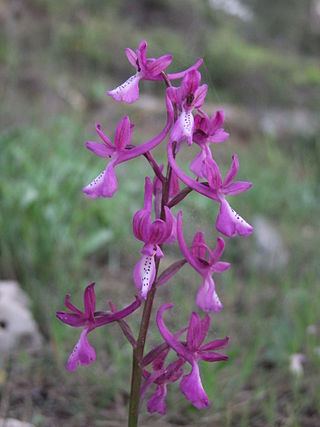
Nevalı Çori was an early Neolithic settlement on the middle Euphrates, in Şanlıurfa Province, Southeastern Anatolia, Turkey. The site is known for having some of the world's oldest known temples and monumental sculpture. Together with the earlier site of Göbekli Tepe, it has revolutionised scientific understanding of the Eurasian Neolithic period. The oldest domesticated Einkorn wheat was found there.
Anatolian or anatolica may refer to:
Tushhan, also known as Ziyaret Tepe, was an ancient city in Mesopotamia and was a provincial capital in the upper Tigris river valley, on the south bank and inhabited since the Mitanni period, and mainly during the Neo-Assyrian period during the Iron Age.
Celaenae (Celænæ) or Kelainai was an ancient city of Phrygia and capital of the Persian satrapy of Greater Phrygia, near the source of the Maeander River in what is today west central Turkey, and was situated on the great trade route to the East.

Alishar Hüyük was an ancient Near Eastern city. It is near the modern village of Alişar, Sorgun.

The Adelidae or fairy longhorn moths are a family of monotrysian moths in the lepidopteran infraorder Heteroneura. The family was first described by Charles Théophile Bruand d'Uzelle in 1851. Most species have at least partially metallic, patterned coloration and are diurnal, sometimes swarming around the tips of branches with an undulating flight. Others are crepuscular and have a drab coloration. Fairy longhorn moths have a wingspan of 4–28 millimeters, and males often have especially long antennae, 1–3 times as long as the forewing.

Cauchas rufimitrella is a diurnal lepidopteran from the family Adelidae, the fairy long horn moths. It is found in almost all of Europe, except Portugal, Ukraine and the southern part of the Balkan Peninsula.

Orchis anatolica is a species of flowering plant in the Orchidaceae family. It is native to Crete, Cyprus, the East Aegean Islands, Greece, Iran, Iraq, Lebanon, Israel, Syria, and Turkey.

Cauchas is a genus of the fairy longhorn moth family (Adelidae). Among these, it belongs to subfamily Adelinae. The taxon "Cauchas" Philipp Christoph Zeller 1839 was originally created as a subgenus of the genus Adela Latreille 1796 but was raised to the genus level in 1980 by Ebbe Schmidt Nielsen.
Cauchas albiantennella is a moth of the Adelidae family. It is found in France and Austria.

Cauchas breviantennella is a moth of the Adelidae family. It is found in Sweden, Finland and northern Russia.
Cauchas brunnella is a moth of the Adelidae family. It is found in Uzbekistan.

Cauchas canalella is a moth of the family Adelidae. It is found in Russia.
Cauchas florella is a moth of the Adelidae family. It is found in Russia and Turkey.

Cauchas leucocerella is a moth of the Adelidae family. It is found in most of Europe, except Ireland, Great Britain, the Benelux, the Iberian Peninsula, Switzerland, Denmark, Fennoscandia, Estonia and Lithuania.

Cauchas rufifrontella is a moth of the Adelidae family. It is found in most of Europe, except Ireland, Great Britain, the Benelux, the Iberian Peninsula, Switzerland, Fennoscandia, the Baltic region, Bulgaria and Ukraine.
Cauchas tridesma is a moth of the Adelidae family. It is found in Russia and Turkey.
Arragonia anatolica is a moth of the family Autostichidae. It is found in Turkey.

Morchella anatolica is a rare species of ascomycete fungus in the family Morchellaceae. It was described as new to science in 2010 from southwest Anatolia, Turkey, where it grows on moss-covered stream beds in pine forests. An ancient climatic relict, M. anatolica is restricted to the Mediterranean basin and has also been documented in Spain, Cyprus and Greece, where it is sometimes encountered with trees of the Oleaceae family. Together with its sister-species Morchella rufobrunnea, they are the earliest diverging lineages in genus Morchella, forming a distinct clade that is basal in global morel phylogenies. Because of its phylogenetic position, M. anatolica has been crucial in inferring the historical biogeography of the genus, which is estimated to have emerged somewhere in the Mediterranean region in the late Jurassic.
Nemapogon anatolica is a moth of the family Tineidae. It is found in Croatia, Greece, Turkey and Jordan.











